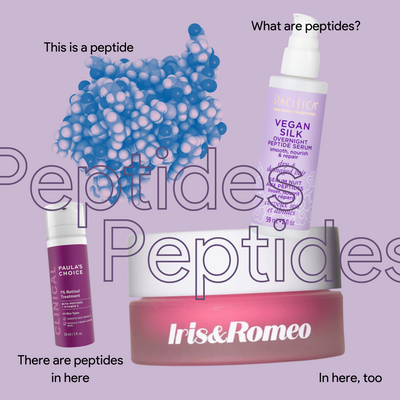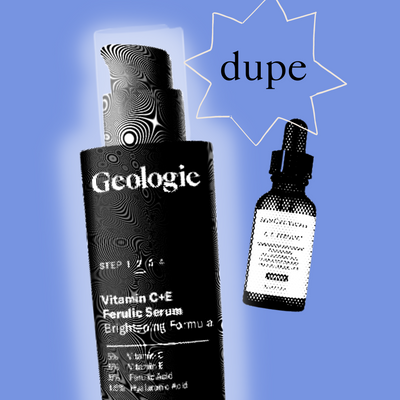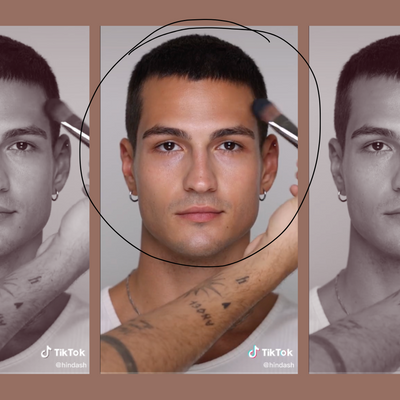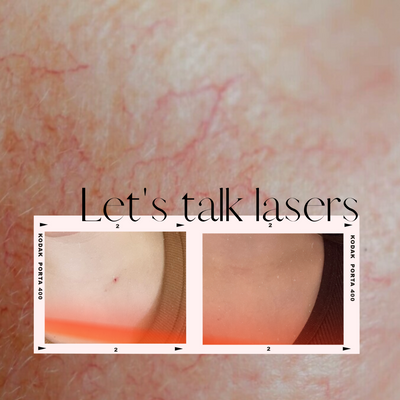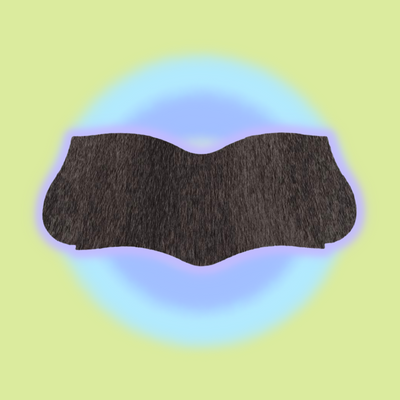When I first started getting into skincare, I thought my skin type was combination/oily.
I would get breakouts often and my skin would react poorly to any new product or ingredient. My skin was all over the place, and it seemed impossible to get a handle on my breakouts.
SEE ALSO: This bar soap cleared and healed my cystic acne.
My life-changing moment was going into Sephora to pick up a new combo-friendly foundation. I ended up taking a skincare test to determine the correct color and type of foundation for my skin. After taking the test and talking with a consultant, I discovered that my skin wasn’t combination at all, but actually dry and dehydrated. WHAT?!
Once I began this shift from using oily/combination skincare products to using products made for dry/dehydrated skin, I saw an instant change in my skin’s texture and tone. My blemishes and acne disappeared virtually overnight. As I learned more about my new-to-me skin type, I discovered that dry skin and dehydrated skin are actually two very different things.
Dry skin
According to cosmetic dermatologist Dr. Paul Jarrod Frank, dry skin is based on the natural oils of the body. People can tell if they have dry skin based on if their skin easily gets irritated, they struggle with using a lot of products, and/or have flaky, rough skin.
Dr. Paul also said that most people do have some type of combination skin, with certain areas being drier or more oily than others. For example, the T-zone tends to be more oily than the cheeks. However, this can also vary based on genetics.
If you’re experiencing dry skin, Dr. Frank recommends using thick moisturizers and creams versus lightweight gels or lotions. Your skin needs those additional oils if you’re not producing enough on your own to keep all the cells in your various skin layers plump and ~juicy~.
“You can also apply ointments if you need significant lipid formation,” he explains. “Additionally, if you have easily irritated skin, that’s when you need additional moisturizers to restore the lipid content that you may not have naturally.”
Dehydrated skin
Dehydrated skin actually refers to the water levels in your body, and is just a reflection of the “temporary state of overall dehydration,” Dr. Paul tells Very Good Light. Dehydrated skin is a reflection of low water intake, which can be seen mostly in the stratum corneum and the dead skin layers near the surface of your skin.
“The signs of dehydrated skin are dull, dry skin,” Dr. Frank tells Very Good Light. “Sometimes it’s tough to tell the difference, but usually, dehydrated skin correlates with dehydration in other organs of the body, mostly directed by thirst. Drinking a lot of water certainly is good for the skin and for preventing dehydration.”
If you think you have dry skin, you may also be experiencing the effects of dehydration. Drinking a lot of water will not only help your skin look and feel better, but also the rest of your body. Aim for a half-gallon to a gallon per day to keep your whole body hydrated and flush out any toxins you don’t want sticking around.
Think of it like this: dehydration is more of an internal issue, whereas dry skin is more external. Dry skin can be a sign of dehydrated skin, but they’re two very different problems that can’t be solved using the same method. The main way to fix dehydrated skin isn’t with topical treatments like moisturizers, but by drinking water and keeping yourself hydrated.
How do you figure out your skin type without getting it wrong?
Joanna Vargas, celebrity facialist and author of Glow From Within, explains that there are a few different key indicators to each skin type.
Oily skin typically looks like an orange peel with large, open pores that are visible on the entire face. Dry skin will not have any visible pores and looks a little dull and chalky. It tends to get sensitive and patchy in the winter due to the dry air. Combination skin is a mixture of oily and dry, where only parts of the skin are oily—typically the T-zone—and other parts of the skin, like the cheeks, are dry. Normal skin has visible pores, but not like an orange peel. Breakouts are also rare with normal skin.
Your routine and products can also affect your skin type. Vargas explains that you can make your skin sensitized by overusing acids or over-exfoliating. You can also create more acne breakouts by using devices that spread bacteria.
Shas an easy trick to tell whether or not your skin is dehydrated: “Give your skin a tiny pinch on the cheek. If it appears plump and smooth, your skin is nice and hydrated. If it wrinkles easily, it is dehydrated.”
Even if you do figure out your correct skin type, Dr. Frank warns not to get too comfortable with it. As you age, your skin type might change.
“As we get older, we tend to have a drier skin type,” he says. “People with genetically oilier skin types tend to have fewer problems with irritation or sensitivities to products that may come out in the reflection of dryness, scaliness, and tightness of the skin.”
Even if you think you might be one skin type, it’s worth it to take a second look and question if the products you’re using are helping or hurting your skin. Determining your skin type is the first and most important step when it comes to perfecting your skincare routine and getting clear, flawless skin.


